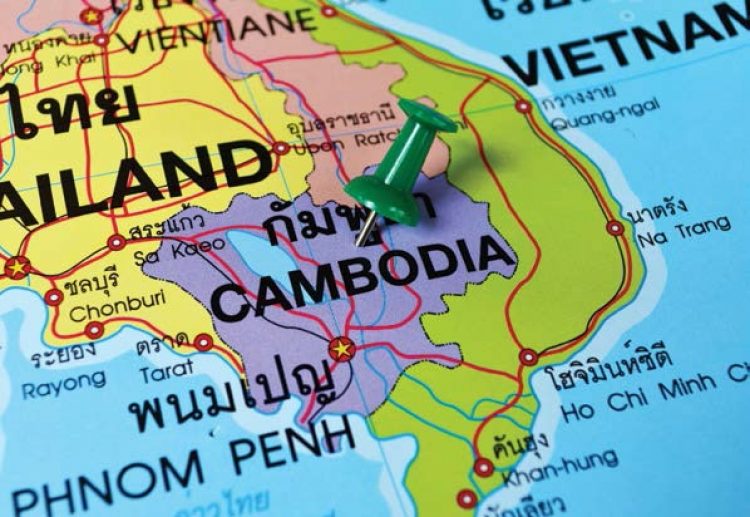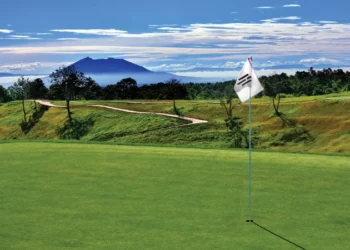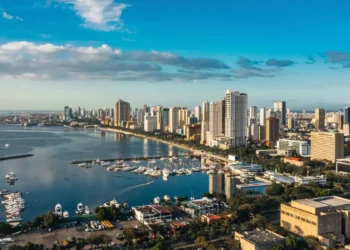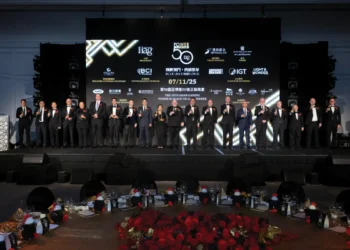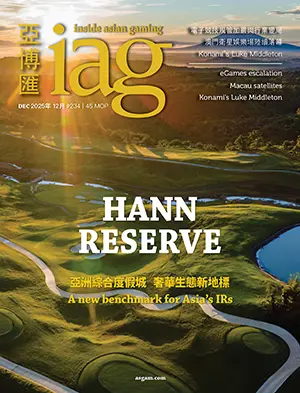Among dozens of casinos in Cambodia, NagaWorld in Phnom Penh has done the most to raise the kingdom’s regional profile
Cambodia doesn’t often appear on regional leader boards, but it tops Southeast Asia when it comes to number of casinos. The kingdom hosts some 60 of them, most of which are small operations along its borders, but Cambodia also has ambitious operators traded on major exchanges poised to fuel further growth, including NagaCorp, a top performer on Hong Kong’s Hang Seng Index since its 2006 listing, NASDAQ-listed Entertainment Gaming Asia, controlled by Lawrence Ho’s Melco International, and most recently Australia-listed Donaco International, which is finalizing its purchase of Star Vegas, reputed to be the best performer among Cambodia’s border casinos.
Even though Cambodia doesn’t border China, geography favors its gaming industry. The kingdom is wedged between Vietnam and Thailand, countries with a combined population approaching 200 million with no legal casino gambling open to their citizens unless, in Vietnam, they also hold foreign passports. Cambodia has similar rules, though enforcement is a far cry from Singapore or Vietnam, where everyone must present a valid passport or national ID card for entry.
Relaxed regulation is part of Cambodia’s gaming environment. Coming out of the dark times of the Khmer Rouge regime that massacred an estimated two million people and devastated national institutions, followed by Vietnamese occupation, the new government institutions established in the 1990s had more important issues than establishing a comprehensive casino regulatory framework. Rules have arisen largely ad hoc, although Cambodian authorities say national casino legislation could be drafted this year. Gaming taxes are assessed monthly per machine and table with no revenue component. For busy casinos, that means effective tax rates in the single digits. For opposition politicians, it means casinos are an untapped potential revenue source.
Casinos have also helped make tourism a plank in Cambodia’s economic revival, providing both attractions and service jobs where experience rather than academic credentials matter most for advancement. Cambodia’s GDP grew 7% last year, the second-best performance in Asia, behind China, and since 2000 the kingdom has been the sixth fastest growing economy in the world, according to Hong Kong’s Political and Economic Risk Consultancy.
“Business is booming,” Global Security Services Managing Director John Muller, working in Cambodia since the early 1990s, says. Tensions between Vietnam and China and internal political conflict in Thailand have spurred greater foreign investment interest in Cambodia, he notes, abetted by government investment in infrastructure, much of it financed by China, a strong ally of Prime Minister Hun Sen, who has held power for 30 years.
Hun Sen’s Cambodian People’s Party had its parliamentary majority reduced in the 2013 election. Post-election political and labor strife brought barbed wire to the streets of Phnom Penh, though pay raises and moves toward reform and combating corruption have calmed the situation. “Cambodia is a country that still has huge political risk,” Spectrum Asia CEO Paul Bromberg says. “Hun Sen and his party feel they’ve done so much for the country, they can’t understand why many people aren’t happy.”
PERC assesses business risk in Cambodia for this year slightly higher than for 2014, despite the easing of border tensions with Thailand and increased internal stability. Even if the opposition wins the 2018 election, economic policies are likely to remain largely unchanged, according to multiple observers. PERC attributes increased business risk to a weak educational system, challenged to produce a sufficiently skilled labor force to meet business demands. PERC also sees risks to tourism from internal factors in Vietnam, Thailand and China. Nevertheless, Cambodia’s GDP looks set to grow at 7.5% this year, likely the fastest rate in Asia. It’s a heady brew that continues to nourish the gaming industry.
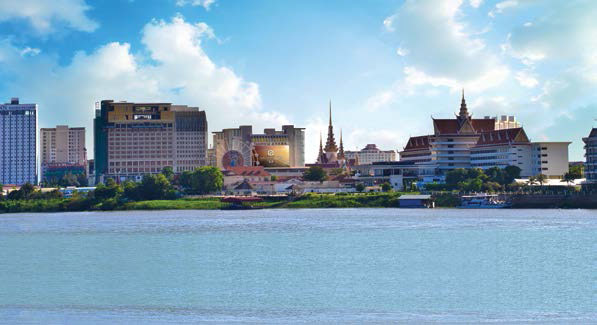
“This country has been a work in progress, and we’ve been a work in progress,” NagaCorp Chairman Timothy McNally says. “But we’ve arrived.” NagaCorp’s revenue from NagaWorld in Phnom Penh has expanded at a 28% combined annual growth rate (CAGR) and EBITDA at 30% since 2010. While Macau experienced a historically bleak first quarter this year, NagaCorp’s gaming revenue grew 48% and VIP roll rose 79%. Major expansion of NagaWorld and a new resort in Russia’s Far East are expected to fuel further growth.
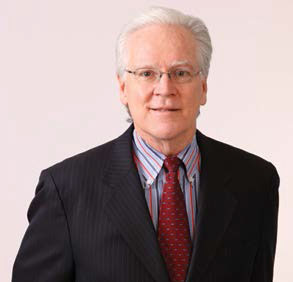
BUFFER ZONE
NagaCorp has come a long way from the barge in the Bassac River, just downstream from its confluence with the Sap River and mighty Mekong, where it began gaming operations 20 years ago this month. The company holds a 70-year casino license—Cambodia’s other casino are generally licensed on an annual basis—that runs through 2065, with a 41-year monopoly within a 200 kilometer (120 mile) radius of Cambodia’s capital Phnom Penh that expires in 2035, with stipulated exclusions for border areas, colonial highland retreat Bokor and Sihanoukville, Cambodia’s main port and a beach resort.
It wasn’t until 2003 that NagaCorp operations moved onshore with 44 tables and 211 machines at NagaWorld’s present location 500 meters further upriver, less than a kilometer south of Cambodia’s Royal Palace and the city’s bustling riverside promenade. The company’s $95 million initial public offering in Hong Kong—which saw that exchange’s first listing of a gaming company, prior to the listing of all of Macau’s operators there—provided funds to complete the first phase of the hotel and entertainment complex. Controlling shareholder and CEO Chen Lip Keong, a Malaysian medical doctor and entrepreneur who serves as an economic adviser to Hun Sen, could have financed the project out of his own pocket. “We went to the marketplace to become an international company,” Mr McNally, a former US FBI agent explains. “Dr Chen did it with the vision to be the best gaming destination in Indochina and to be poised to move into other opportunities in Indochina.”
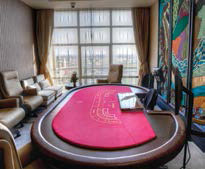
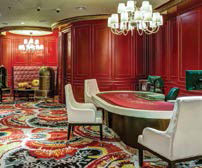
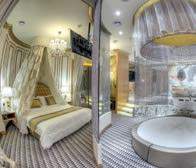
NagaWorld has expanded over the years into the biggest gaming resort in Indochina with gross floor area of 113,307 square meters (1.2 million square feet). It currently has some 200 tables, 1,670 gaming machines, 18 food and beverage outlets and 700 five-star hotel rooms with rack rates starting at $105 a night. It also has banquet and meeting space, entertainment in the lobby as well as on the gaming floor and a spa with a whirlpool bath in every treatment room. Total investment has been around $300 million; Mr McNally says a similar facility in Macau would cost well over $1 billion. Naga2, under construction across the street, will double capacity when it opens in 2017. Dr Chen is financing that $369 million project, which NagaCorp will acquire upon completion in exchange for company shares. Meanwhile, NagaWorld keeps evolving and innovating.
Focused on serving low-end junkets in its early days, NagaWorld set its sights on serving the mass market after its hotel and entertainment wings were completed in 2008. The transition to mass proved presecient when in early 2009 Cambodian authorities shut down Phnom Penn’s slot parlors, which had operated thousands of machines; NagaWorld’s slot revenue increased from $3.1 million in 2008 to $34.3 million in 2009. NagaWorld debuted dealer-assisted electronic multi-game terminals in 2011.
CELL DIVISON
NagaWorld also added what it calls casino cells with unique décor and themes, including the China Garden with pagodas and live plants, NagaRock with disco lights and dancers, and Saigon Palace, appropriate since a large proportion of mass-market players are Vietnamese, once as many as 40%, though executives say that’s come down to 15% these days. The ground level main floor has the widest variety of games, including stud poker with minimum bets as low as $5, $10 roulette tables, blackjack at $20, plus Vietnamese card games at $40. (US dollars circulate commonly alongside the local riel.) Baccarat, which accounts for 85% of mass table revenue, has minimum bets of $100 for what executives call “squeeze games,” where players can handle the cards, with several $200 tables. There are $40 baccarat tables with cards dealt face up. Mass minimums were increased at the end of 2012, and maximum mass baccarat bets raised to $50,000.
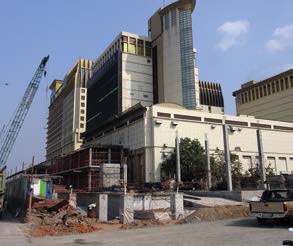
The new strategies dramatically changed revenue mix. In 2008, junket play constituted 93% of gaming revenue through a variety of commission programs. In 2011, junket play was down to 38% of gaming revenue. More importantly, after two recession-impacted years, gaming revenue had grown 10% from 2008 to $211.4 million in 2011 with overall revenue up 16% to $223.8 million, net profit grew from $40 million to $92 million and EBITDA rose from $49.3 million to $111.8 million as margins improved from 26% to 50%.
“In 2012, we realized we had to step up on the VIP side,” Mr McNally says. “To be a full service property we needed to upgrade our gaming facilities and VIP amenities.” Competitive pressure from regional competitors contributed to that decision.
Late that year, NagaWorld opened penthouse suites—modern duplexes with terraces overlooking the rivers that would fit proudly into Macau or even Manhattan. The suites, for players that check in $2 million and roll it six times, have attached gaming rooms. “That’s an advantage over Macau,” Senior Vice President for Casino Operations Vincent Mascio says. “We’re not as regulated on the small things as Macau. It makes life easier.” Cambodia also has no whiff of smoking restrictions on the horizon.
NagaCorp has been out in front of Cambodia’s government on anti-money laundering measures. “AML is an issue because we knew it would be an issue with international financial companies and other destinations,” Mr McNally says. “As a company looking to expand elsewhere, we emphasize corporate governance and a clean operation.” NagaCorp regularly commissions independent audits of its AML procedures, including one last year.
A supplementary stock offering in March 2013 raised $156 million to develop direct premium and VIP business. Some funds went toward hardware including adding VIP rooms, limousines and a private hangar under construction at Phnom Penh’s airport. But much was seed money for Naga’s Junket Incentive Program that offers promoters a 70% split of revenue, rising depending on roll, compared with Macau’s typical junket share in the mid- 40s—any more than that would not be feasible in Macau given the 40% gaming tax there. By sharing rewards and risks with junkets, NagaWorld has been able to raise VIP maximum bets to $200,000. To support the incentive program, it added VIP rooms with a total of 47 tables last year.
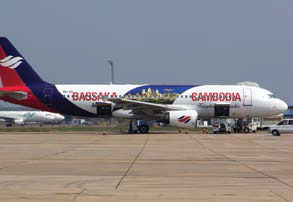
VIP PAYOFF
“VIP was our big story of 2014,” Mr McNally says. “Our VIP strategy is paying off.” After a long courtship, NagaWorld brought in its first Macau junket in August, Asian Nations, a group of agents affiliated with other Macau junkets, NagaWorld executives say. The impact was immediate, with rolling volume up 47% year on year in the second half of last year, and Asian Nations contributing $627 million in a little more than four full months of operation, according to Union Gaming Research Macau. NagaWorld, which opened a marketing office in Macau last year, is seeking agreements with other junket promoters. “We don’t have the cosmopolitan feel of Singapore, but the feedback is positive” from Macau visitors, Mr McNally says. “Cambodia has its own unique attractions.” Compared to some other regional gaming destinations, “It’s a better fit actually for mainland Chinese.”
Last year, VIP roll grew 35% to $6.2 billion and VIP revenue increased 41% to $188 million. Even without Asian Nations’ contribution, second-half VIP roll jumped by more than 20% because, unlike Macau, NagaWorld was getting most of its VIP revenue from Southeast Asia. Morgan Stanley estimates China VIP business contributed less than 5% of NagaCorp’s second-half gross profits, with 22% from other VIPs and 73% from the mass market.
On the other hand, the relatively small contribution from China provides ample room for growth, particularly under current conditions. “The downturn in Macau offers the group opportunities to further penetrate the Chinese gaming market in both the VIP and mass gaming segments, by being able to offer attractive terms to junket operators and agents as a result of NagaWorld’s low cost structure,” the company stated in its earnings release.
Macau’s largest junket promoter, Suncity Group, is expected to begin sending customers to NagaWorld this month. Morgan Stanley Asia estimates Suncity will roll $200 million monthly at NagaWorld. First quarter 2015 VIP roll increased 79% to $1.7 billion and revenue doubled to $65.5 million. For the year, Morgan Stanley estimates VIP roll will grow 54% to $9.6 billion and generate an incremental $21 million in gross VIP profits.
A revamp of NagaWorld’s rooftop pool area opening later this year will add about a dozen VIP tables, as well as mass gaming. This casino cell will allow players to enter in swimwear; NagaWorld won’t say what its staff will wear.
These changes are just a prelude to Naga2, under construction 100 meters (110 yards) away across a major roadway. Naga2’s two towers will have 1,000 guest rooms, 38 VIP salons, up to 300 tables and 500 electronic gaming machines, plus a theater with 2,100 seats and meeting space across 110,000 square meters. The main focus will be on VIP, with perhaps 50 additional mass market tables. Executives suggest one tower may be dedicated exclusively to VIP guest rooms outfitted with private gaming tables.
The downside to increased VIP play is margin erosion. Net profit margins fell from 40.7% in 2013 to 33.7% last year. Margins on VIP play also fell three percentage points to 37% due to increased incentives to junkets. Analysts believe regional competition from the Philippines, South Korea and Vietnam might drive up costs and put further pressure on margins. Mr McNally concedes, “VIP is demanding. It’s high-end costs. It’s not something where you can have one foot in the water. Margins [on VIP] are not what they are on the mass market side. It’s the mass market that keeps your foundation solid,” he says. “We want robust junket representation, but mass market is still key.”
AN EYE ON CHINA
NagaCorp is also looking toward Chinese players to boost the mass segment. Last year it purchased a pair of A320 airliners that can seat up to 180 passengers to supplement its two Gulfstream private jets. The aircraft have been leased to independently operated subsidiary Bassaka Air, which is currently flying between Phnom Penh and Siem Reap, the site of Angkor Wat, the thousand year old Buddhist temple complex that’s Cambodia’s top tourist attraction. While the airliners can be used for VIP charters, NagaCorp executives say the main target is mass market tour groups. It has an agreement with China International Travel Service (CITS) to bring mainland visitors to NagaWorld. According to a recent research report headlined “Gaga for Naga,” Union Gaming Research Macau says Bassaka Air will begin twice weekly service to Macau this month and flights to China are expected to begin in July.
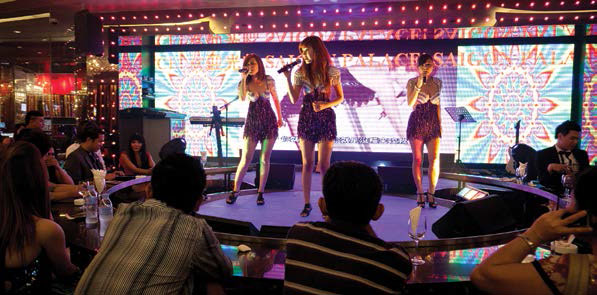
NagaWorld signed up another name familiar to mainland travelers, China Duty Free Group, for NagaCity Walk, the street-level and below-ground shopping mall linking to Naga2 that was designed by renowned casino architect Paul Steelman. China Duty Free will secure tenants for the 18,000 square meter retail area and operate its own outlet occupying at least 2,400 square meters. “From a strategic standpoint, we developed the relationship with China Duty Free with an eye on China,” Mr McNally explains. “Cambodia is very intent, as we are, in building relationships with China. We think we can be a beneficiary of these relationships.”
Cambodia’s visitor arrivals from China grew 21% last year to 560,335, as overall arrivals grew 7% to 4.5 million, more than double the level five years before. That comes on top of Chinese arrivals surging 38.7% in 2013 to take second place behind Vietnam. In its annual report, NagaCorp writes that continued growth from China and other “gaming-centric countries is one of the drivers of our business growth.”
To better accommodate Chinese visitors, NagaWorld aims to “Chinify” the resort, a drive that goes well beyond decorations for Chinese New Year and adding items to the breakfast buffet, according to Managing Director for Corporate Affairs Rob Cho. Since January last year, NagaWorld has offered Mandarin classes for staff with prize competitions for the top students.
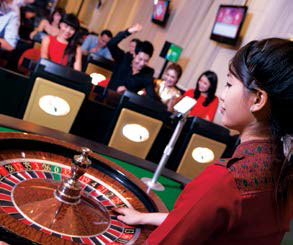
Overall, NagaWorld, which currently has 5,400 employees in Cambodia, will need more than 10,000 by the time Naga2 opens. “We have a unique value proposition in HR, a lot of middle management opportunities,” Mr Cho, a former Hong Kong banker, says. “We need 600 solid managers in three years. We have 300 and need to localize.” NagaWorld offers the opportunity to “leapfrog people in management experience.”
To help bolster the hospitality sector workforce, NagaCorp created Naga Academy in 2012. Naga offers three- to six-month training programs in eleven areas, from food and beverage service to audiovisual to marketing and sales. Last year it trained nearly 1,000 interns. NagaCorp hired the majority and assisted the rest to find jobs elsewhere with a 100% success rate.
Other bottlenecks are proving more difficult to resolve. The company had hoped to begin flights from China and Macau late last year, but red tape has delayed this key growth initiative. NagaCity Walk was due for completion at the end of last year, but has been set back by construction issues. The company now anticipates finishing construction in the third quarter, with a first-quarter opening next year. Meanwhile, NagaCorp’s staff costs last year increased 40% to $48.7 million, partly to keep NagaWorld line employees ahead of a near doubling of Cambodia’s minimum wage since 2013, but mainly due to beefing up executive talent, which may be underutilized at the moment due to project delays. NagaCorp remains confident “these promotional and operational strategies will bear fruit in the coming years as NagaWorld grows its market share in Asia,” and analysts largely agree, but meanwhile earnings are suffering.
Last year, net profit fell 3% to $136 million, even though gaming revenue increased 17%. Excluding the $15 million entry fee paid in 2013 by one of NagaWorld’s three EGM revenue share operators, net profit increased 9%. Morgan Stanley, Union Gaming and Credit Suisse have trimmed 2015 estimates for NagaCorp shares, while maintaining positive ratings for the stock.
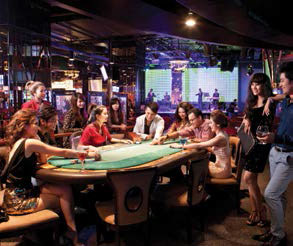
Amid the short term obstacles, Union Gaming Research Macau writes, “NagaWorld continues to notably outperform its regional Asian counterparts. We also firmly believe that the company has and is putting the right things in place to continue to drive revenue across all of these segments over the next two years prior to the opening of Naga2.”
And that may just be the beginning. With Cambodia’s visitor arrivals expected to reach 7.5 million by 2020, it doesn’t take long for company executives to mention Naga3 and Naga4.
Editor at large Muhammad Cohen also blogs for Forbes on gaming throughout Asia and wrote Hong Kong On Air, a novel set during the 1997 handover about TV news, love, betrayal, high finance and cheap lingerie.






